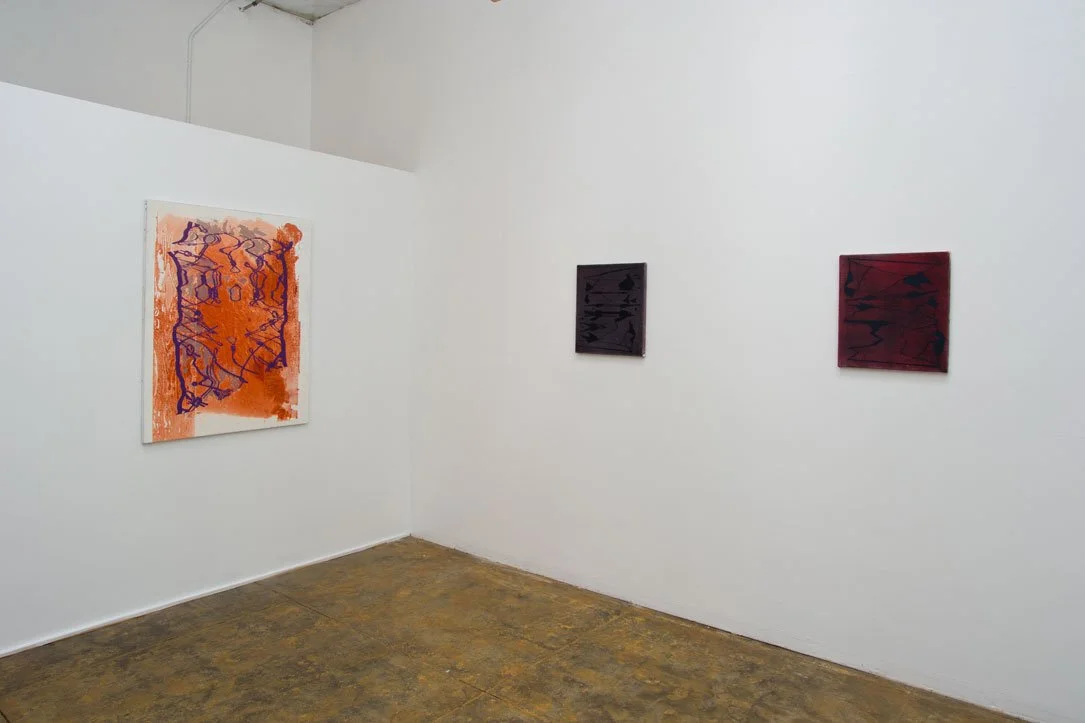Daniel Payavis
Decorations und Gift
April 13 through May 18, 2014
Texan Equities is pleased to present its first solo exhibition by Los Angeles based artist Daniel Payavis.
In a new body of work, Payavis uses several motifs to develop series of oil paintings, the motifs serving as determinants for the paintings’ scale, ground quality and palette. Doubled textual artifacts, a rope pattern design, and a flag composition comprise the heavily coded elements that Payavis distorts into sigils of uncertain meaning, icons that exhibit their own path of alteration.
The paintings have two conspicuous layers. The backgrounds are composed of abstract color fields, meticulously developed using multiple surface treatments. The foregrounds appear as a superimposition of discreet, graphic forms. This seemingly simple binary arrangement is the field for the exploration of signs, designs, and symbols and their relationship to the grounds from which they emerge or in the midst of which they hover and organize.
Payavis develops the grounds of his canvases almost ritualistically, slowly building an ultra-smooth, fluid, transparent, at times gaseous, ether-like space within which content is isolated and examined, tested for its signifying strength and interrogated for its intent. The foreground elements – symbolically loaded forms of text, flag, and rope – are manipulated to a point of non-recognition. By stretching, elongating, twisting and deforming these elements to the degree that they are no longer legible, if they ever were, Payavis coaxes from their original presence a new one: one that is indeterminate but which offers myriad suggestions of interpretation.
These semi-abstractions emerge from an admitted mistrust of imagery that Payavis feels in surveying the image as an aggregate whole in contemporary culture. Playing an interpreter of secondary meanings accumulated from the study of this aggregate, he presents the viewer with images that testify to how line signifies, how it does not signify, how it fails to signify. Can a line describe its own distortion? Where does our recognition within a line begin and end?
In The Gift, Marcel Mauss examines the many ways in which gift exchange is an ongoing cultural process that ties social groups together: to give a gift is to give of and for yourself, of and for others. This double nature is abundant in the very notion of giving. In German, the word Gift translates as poison. This destabilizing term offers a significant clue to Payavis’s project: to decorate and to warn, to give graciously to the content and signature of history, and to reveal the pathologies that separate and dissociate us from meaning within the world.








